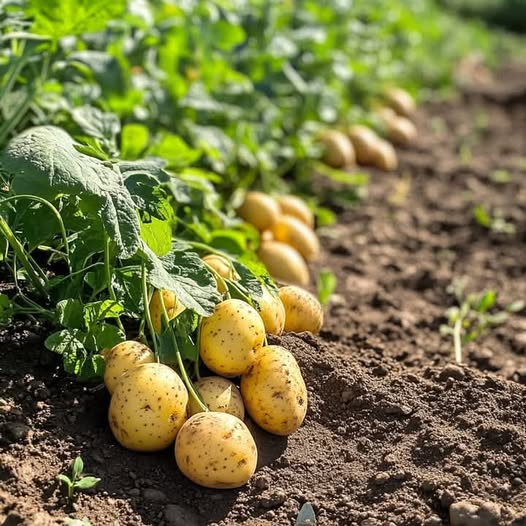Here’s an ultimate guide to growing potatoes, complete with step-by-step tips and common mistakes to avoid:
Ultimate Guide to Growing Potatoes: Step-by-Step Tips & Common Mistakes to Avoid
Potatoes are a versatile and rewarding crop to grow in your garden. With the right approach, you can enjoy a bountiful harvest of these starchy staples. Follow this comprehensive guide to get the best results from your potato patch.
Step-by-Step Tips for Growing Potatoes
1. Choosing the Right Variety
– Types: Select a potato variety suited to your climate and culinary preferences. Common types include Russet, Yukon Gold, and Red Pontiac.
– Seed Potatoes: Use certified seed potatoes from a nursery or garden center. Avoid using supermarket potatoes as they may carry diseases or be treated to inhibit sprouting.
2. Preparing the Soil
– Soil Type: Potatoes prefer loose, well-drained soil with a slightly acidic pH (5.8-6.2). Avoid heavy clay soils.
– Preparation: Work compost or well-rotted manure into the soil to improve fertility and drainage. Ensure the soil is crumbly and free of large clumps.
3. Chitting Seed Potatoes
– What is Chitting?: Chitting is the process of encouraging seed potatoes to sprout before planting. This gives them a head start.
– How to Chit: Place seed potatoes in a cool, light place for 4-6 weeks before planting. Arrange them with the eyes (sprouts) facing up.
4. Planting Potatoes
– Timing: Plant potatoes in early spring, once the soil temperature reaches about 45°F (7°C). In colder climates, wait until the risk of frost has passed.
– Depth and Spacing: Plant potatoes 4-6 inches deep and 12 inches apart in rows. Space rows 2-3 feet apart to allow for growth and ease of maintenance.
5. Caring for Your Potato Plants
– Watering: Keep the soil consistently moist, especially during dry periods. Avoid overwatering, as soggy soil can lead to rot.
– Fertilizing: Apply a balanced, all-purpose fertilizer at planting time. You can also side-dress with compost or a high-potassium fertilizer when plants are 6-8 inches tall.
– Hilling: As plants grow, mound soil around the base of the stems. This “hilling” protects developing tubers from sunlight and promotes higher yields.
6. Managing Pests and Diseases
– Common Pests: Watch for pests like Colorado potato beetles and aphids. Hand-pick or use organic pesticides as needed.
– Diseases: Potato blight and scab are common issues. To prevent these, rotate crops annually, and avoid working in the garden when plants are wet.
7. Harvesting Potatoes
– Timing: New potatoes can be harvested about 2-3 weeks after the plants bloom. For mature potatoes, wait until the foliage has died back.
– Method: Carefully dig up tubers with a fork or shovel, being cautious not to damage them. Brush off excess soil and allow them to cure in a cool, dark place for a week or two.
8. Storing Potatoes
– Storage Conditions: Store cured potatoes in a cool, dark, and well-ventilated area, such as a basement or root cellar. Avoid storing them in the refrigerator as this can affect flavor and texture.
– Duration: Properly stored, potatoes can last for several months. Check periodically for sprouting or rotting.
Common Mistakes to Avoid
1. Using Grocery Store Potatoes: These may be treated to inhibit sprouting and can carry diseases. Always use certified seed potatoes.
2. Planting in Cold Soil: Cold soil can cause poor sprouting and development. Ensure soil is warm enough before planting.
3. Overwatering: Excess moisture can lead to rot and fungal diseases. Ensure good drainage and monitor soil moisture carefully.
4. Ignoring Crop Rotation: Growing potatoes in the same spot year after year can lead to soil-borne diseases and nutrient depletion. Rotate crops to prevent these issues.
5. Neglecting to Hill Up: Failure to mound soil around plants can expose tubers to sunlight, causing them to turn green and become toxic.
Growing potatoes can be a straightforward and rewarding gardening endeavor when you follow these steps and avoid common pitfalls. Enjoy your homegrown potatoes, whether you’re making creamy mashed potatoes or crispy fries!
